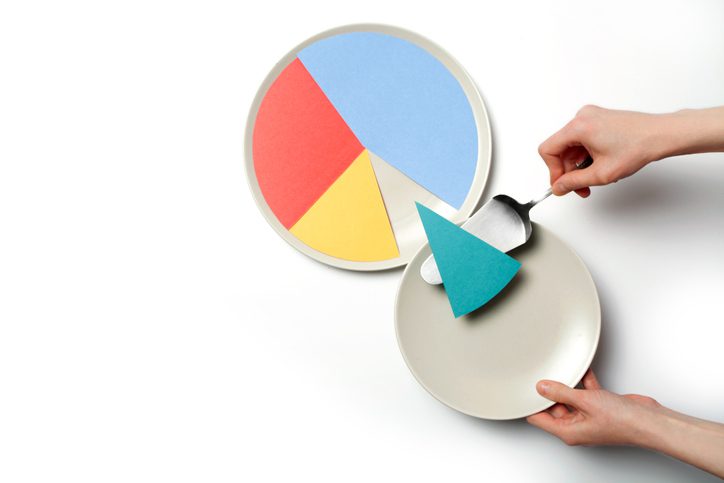How to Lower Your Direct Mail Costs
By Paul Bobnak | September 29, 2021

Editor’s Note: This post was originally published in September 2021 and has been updated for accuracy and comprehensiveness as of September 2022.
One of the best actions you can take to measure the success of your marketing campaign is to know your direct mail costs. When you can list how much you spend on creative, printing, postage, and other expenses, you’ll be able to later figure out your cost per piece and your campaign ROI. In this article, we’re going to look at the typical items that make up overhead in direct mail campaigns. With this background, you’ll be able to make better decisions about how to control, if not reduce your direct mail costs. Each of these sections gives you valuable insight into solving a common challenge for many direct mail marketers.- How Much Does Direct Mail Cost?
- What Does a Typical Direct Mail Campaign Cost?
- How to Save on Direct Mail Costs
- Work with mailing.com & Save on Direct Mail
How Much Does Direct Mail Cost?
It’s one of those questions that gives even experienced and confident salespeople a pause: “How much does direct mail cost?” The answer (usually): “It depends”. Now, that answer may literally be true but it means nothing to you as a marketer. You have a budget to worry about – a potential major pain point. So you need and deserve an explanation of the expenses that go into a direct mail campaign. A lot of factors and variables that make up your direct mail costs. Each comes with its own advantages that have to be carefully weighed against others when planning your direct mail marketing. Here’s a breakdown of some of them.Fixed Costs
Do you remember how I said that measuring direct mail costs “depends” on certain factors? In direct mail production, fixed costs are those standard expenses for services or goods that don’t change regardless of the quantity mailed, client, or for other reasons. And if there’s a follow-up campaign, some of these charges may be much lower if there are few or no changes needed.Set-Ups
A direct mail job requires preparing the right materials, software, and equipment for the printing and mailing of the piece.Project Management
These costs include labor, administrative, and ongoing fulfillment tasks associated with the direct mail campaign as well as functions such as invoicing.Consultation
A direct mail job may require a meeting with a graphic design and/or production staff to discuss ideas for the project.Design/Art and Copywriting
Design really isn’t “free”. For many elements of a direct mail project, agencies or design professionals charge for an initial design, which may include revisions after client feedback. The same applies to marketing copywriters – whether on staff or outsourced – brought onto the project.Variable Costs
From one campaign to the next, direct mail costs can vary greatly depending usually on the quantity being mailed. And it’s important to note that other factors can affect decisions about how many pieces to mail.Materials
Put simply, direct mail is ink on paper. The costs of both depends on two major factors:- what’s required for the initial scope of the mail campaign
- what’s available to your vendor(and when)
Printing
The direct mail costs for printing a campaign vary due to a wide variety of options you have available for any and all components, such as:- Ink: Black-and-white and/or color
- Use of variable data elements & technology
- Coatings, finishings, or embellishments
- Paper stock type, size, quality
- Number of pages, inserts, or tip-ons
- 1-sided or 2-sided printing
- Quantity
- Printing process (litho, offset, or inkjet)
Postage
Determining postage costs can be difficult because of the many USPS regulations that give marketers options for their campaigns. In fact, one of the few fixed postage costs can count on is for bulk mailing permits. Here’s what affects postage pricing:- Dimensions, weight, and format (envelope, folded self-mailer, or postcard)
- Mail Class
- Workshare arrangements (commingling & co-palletization) and presort
- USPS innovation promotions
Data
The list data you use accounts for 40% of the success of your direct mail campaign. So, it’s vital to make sure you have the most complete, up-to-date, and deliverable addresses on your lists. As with print quantity, you’ll need to think in terms of costs per thousand (CPM) for your data. Besides accuracy, other considerations affecting direct mailing list costs are:- Purchase vs. rental of list data
- First, second, or third party source
- Type of list
- Amount of records
- Quality and depth of records
- Number of uses permitted
- Tracking and analytics of campaigns
- Integration of data flowing into your CRM system from other ecommerce or automation solutions
What Does a Typical Direct Mail Campaign Cost?
Here’s a simple breakdown of direct mail costs for a 1,000-piece 9”x6” postcard campaign from the mythical Acme Co. Please note: This does not reflect the pricing structure at mailing.com. This is for demonstration purposes only.| Item | Cost |
| Setup fees (Design & Marketing Copy) | $1,000 |
| Lists | $75 |
| Printing (@$0.50) | $500 |
| Postage (@ $0.306 rate) | $306 |
| Total | $1881/$1.88 per piece |
How to Save on Direct Mail Costs
Don’t be held back from investing in direct mail! There are ways to lower your expenses by trading them off against other variable factors in your campaign. Follow these tips on how to keep costs low while still creating a successful direct mail campaign.Keep Your Data in Shape
Good data drives direct mail campaign efficiency and effectiveness, so you must get this right! Reduce or end the threat of Undeliverable As Addressed (UAA) mail resulting from old, incomplete, or duplicate records. USPS’s National Change of Address (NCOA) database catches new movers. All Standard (Marketing Mail) as well as presort rate First Class Mail must be updated within 95 days of a mailing. The postal service also has several pre-processing address file tools to supplement commercial list hygiene solutions that are available. And if your address correction/matching software has achieved Coding Accuracy Support System (CASS) Certification, you can qualify for discounted rates.Focus on Segments
Segmentation deserves a fresh look as a way to both find savings and to develop new opportunities for growth. Prioritize those customers that should get more of your attention with mail based on the RFM model. Your best customers have bought the most recently, buy most frequently, and spent the most money. Other segmentations include demographics like age, gender, income level, and more.Automation Pricing
If your mailing pieces are compatible with USPS’s processing equipment, they qualify for discount pricing. But, they must meet several criteria, such as:- Minimum quantities (500 mailings for First Class, 200 for Marketing Mail)
- CASS certification in the last 180 days
- An Intelligent Mail barcode (IMb) with the correct delivery point routing code printed on each piece
Test and Keep Testing
Start with a base or control and a response rate for your campaign. Then, consider different variables that may result in lower costs, a higher response rate, or whatever your goal is. Whether you test one variable two ways (A/B or split test) or several variables in combinations (multi-variate), mail a quantity small enough not to break your budget but large enough to be statistically significant. Among the variables you can test:- Mailer format
- Price
- Teaser copy
- Short vs. long copy
- Reply/response device
Change Your Mail Class
Mail sent through USPS qualifies for rates based first on the content of the campaign features and requirements. So which one should you mail with? Well, it mostly depends on the content of your mailing, and how you want to balance timeliness vs. costs. Certain types of mail pieces, like bills, statements, personal correspondence, and handwritten material, must use First Class. But for anything else, you have to look at the costs of your two biggest choices, Marketing Mail and First Class.- First Class (for mailings of up to 13 ounces) gets your mailing delivered quickly (2-5 days). It also guarantees free forwarding and returns of your mail
- Marketing Mail (formerly “Standard”) is handled a little less quickly but at a substantial cost savings


